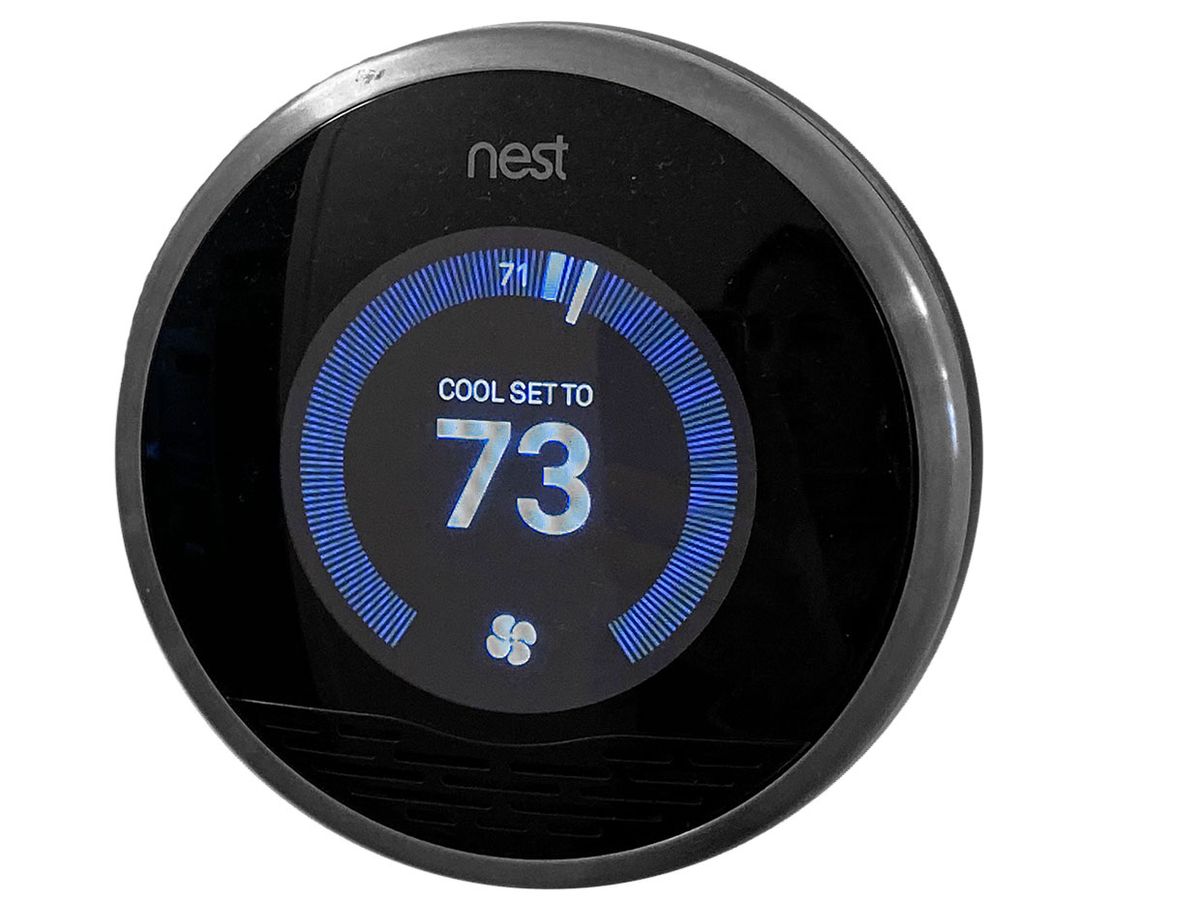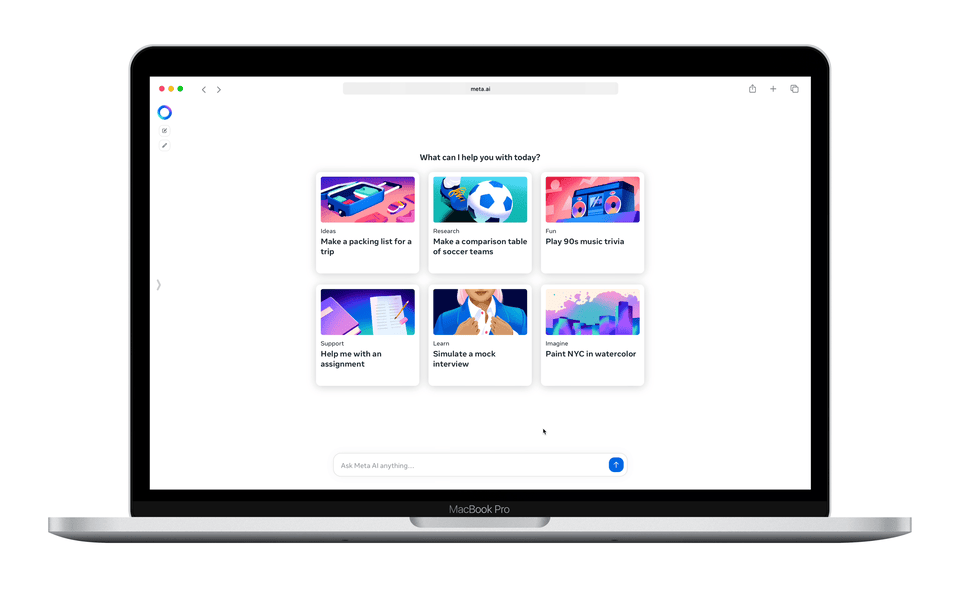The Consumer Electronics Hall of Fame: Nest Thermostat
Why a former Apple engineer built not just a temperature controller but a “Trojan horse into the home”


In 2009, engineer Tony Fadell was building his green dream vacation home near Lake Tahoe, in California. There were heat pumps, photovoltaic panels, expensive windows, and the best insulation money could buy. But when it came time to choose thermostats, Fadell was appalled at the options. The basic choice was the classic 1953 Honeywell Round thermostat, designed by Henry Dreyfuss, and its imitators. On the more contemporary end of the scale were digital thermostats that were expensive, comically difficult to program, and couldn’t be managed with a smartphone app.
This, at the Dawn of the Age of Phone Apps, struck Fadell as very odd. Why hadn’t anyone designed a simple-to-operate thermostat that could be remotely controlled with a smartphone? Home-automation systems and gadgets had been around for years, but most were aimed at people who could shell out thousands of dollars for almost entirely bespoke systems assembled and installed by specialists. There were window shades that would raise and lower at the touch of a button, lighting that would turn on or off based on some customized sensor setup, and maybe a multiroom audio installation that could be used and reconfigured with a remote control. For some reason, the quintessential automated-home owner at the time seemed to be a villain in a James Bond film.
By 2010, there wasn’t a technologist left on Earth who didn’t see a connected world coming—the term Internet of Things had been coined more than a decade earlier. But even by 2010, there weren’t that many people who had much experience building connected devices and systems.
Fadell was one of them. He was already famous in tech circles, starting with his stint in the 1990s at General Magic, which developed an operating system and personal digital assistants that are credited with helping to foment the smartphone revolution. Fadell then worked at Philips, where he helped develop networked services that would run on handheld devices, and finally as a longtime team leader for Apple’s wildly successful iPod product line. He left Apple in 2008.

Seeing an opportunity, Fadell founded Nest Labs in 2010 with a former engineering colleague from Apple, Matt Rogers. And the thing about the Nest thermostat was that from the very beginning, it was going to be only the beginning. One of Nest’s earliest investors, Randy Komisar from Kleiner Perkins Caufield & Byers, told Fortune that during Nest’s first pitch requesting funding, he had been deeply disappointed when Fadell revealed a prototype of a thermostat, and not just because it was carved out of Styrofoam. It was just a thermostat—one of the single most boring categories of gizmo in modern technology. Fadell talked to Komisar for a while about popularizing connected thermostats before letting the other shoe drop: Nest would do the same thing “for every unloved product in the home.”
“Then I got it,” Komisar told Fortune. “Nest was a Trojan horse into the home. In 48 hours we had a check for Tony.”

Within a few years, Nest’s product line expanded beyond the thermostats to include a security and monitoring camera, a doorbell, a door lock, and a smoke-and-carbon-monoxide detector. But in the beginning, Nest had to survive with just its thermostat. The company had to make a strategic choice—a bet, actually.
At the time, there was a commonly held view that automated homes would work best by supporting various automation products through a home gateway, or hub. The supposed advantage of a gateway was that it would represent a single point for Internet access and distribution within the home, as well as a central point for managing all connected devices used in the home. Through a standardized hub, broadband providers and other companies could sell devices and services for such applications as home security.
Nest was not interested in connecting to a hub. As long as its thermostats (and projected subsequent products) were Wi-Fi enabled, then the smartphone that millions of people already carried around with them could be used to control it. There was no need to connect to some other intermediary unit. At the time, though, companies as diverse as ADT, Comcast, and Staples, among many others, were interested in providing gateway hubs. It could have gone either way.
The developers of TiVo had considered building a gateway more than 10 years earlier and couldn’t find anyone interested, which is one of the reasons they built the TiVo DVR instead. Consumers had no enthusiasm for the idea back then, and by the time Nest was ready to build its thermostat, consumers still had no interest. It seemed that these big and powerful American tech companies were all chasing an illusion and had been doing so for years.
Nest introduced its thermostat at the end of 2011, with a price of US $249. Several publications ran teardowns of the Nest. One by EE News found a Texas Instruments Sitara microprocessor, a power-management and USB chip, Flash memory, a 32Mx16 SDRAM, and a Murata Wi-Fi module. EE News also found a Zigbee network coprocessor. Zigbee is a low-power, low-data-rate indoor network standard that, in 2010, had few users. Nest was clearly keeping its networking options open.
Where programmable thermostats always had a bewildering constellation of buttons and switches, the Nest has essentially one—its outer ring, which is a control dial used mainly to turn the target temperature up or down. The dial ring was fitted with the same sort of sensor used in optical mice; the sensor read markings inside the thermostat’s housing. The front face of the round unit is itself a button; click it to get a menu, and then rotate the dial to cycle through options. Think about it—the guy who ran Apple’s iPod business designed the Nest thermostat as if it were a giant iPod click wheel. Upon first encountering a Nest thermostat, most people already had a pretty good idea how to use it. Though users can physically manipulate the thermostat to program it, the company’s user studies indicate that people are more likely to use the Nest app on their smartphone.
The Nest’s most revolutionary feature is that it employs software enabling it to learn from user behavior and adjust accordingly. For example, it’s equipped with both short-range and long-range infrared sensors, so it can detect when people approach the device. That’s useful because when people approach the Nest, it’s usually to turn the thermostat up or down. After being manually adjusted enough times—in as little as a week, the company says—the thermostat begins to pick up the patterns and turn itself up or down accordingly at the appropriate times.
Those infrared sensors can also detect when people enter or leave the room, a feature that enables it to make a room warmer when it’s inhabited and cooler when it’s not. It’s one of the factors behind Nest’s claim that its thermostats are more energy efficient than nonprogrammable thermostats. The only strategy that might be more efficient is allowing utilities to manage home heating and cooling systems, and with Nest’s networking capabilities, it’s not only possible, it is in fact already being used that way. For example, the Texas utility Reliant Energy, in Houston, offers a plan to remotely manage its customers’ heating systems to reduce their costs; Reliant equips those who sign up with a Nest thermostat.
Nest got an additional boost early on when the two biggest home-improvement chains in the United States—Home Depot and Lowe’s—chose to carry Nest products. The company has never shared sales numbers, but it is commonly reported that the device has been shipping in the millions per year.
Ironically, considering that one of Nest’s first big decisions was to refuse to be a part of a standardized home-automation hub, Nest might yet go in that direction. To understand why, start with the fact that Google was an early investor in Nest. In January 2014, it bought the company outright, for $3.2 billion. Fadell left the company in 2016 and decamped to Paris, where he started an early-stage investment firm called Future Shape that plows some of his vast proceeds from the Nest sale into startup companies. That same year, Google released an artificial-intelligence-powered virtual-assistant app called Google Assistant. Coupled with a voice-activated speaker, called Google Home, the package can act as a smart hub, controlling multiple compatible devices—such as thermostats, security systems, cameras, and lighting. Sure enough, in May of 2019, Google announced a plan to bridge its Google Assistant products with its Nest product line. Some analysts wondered why it took Google three years to integrate the two.


